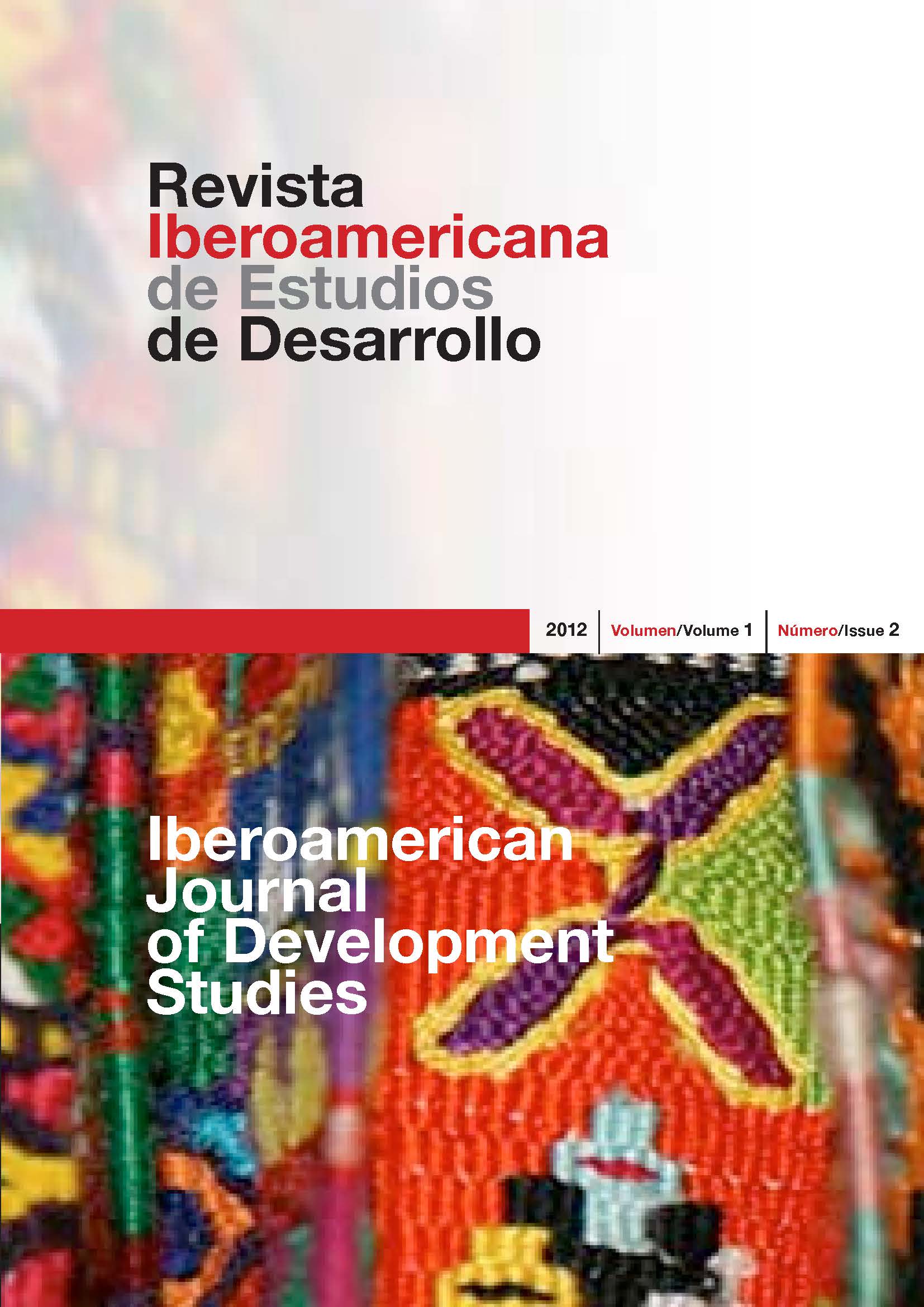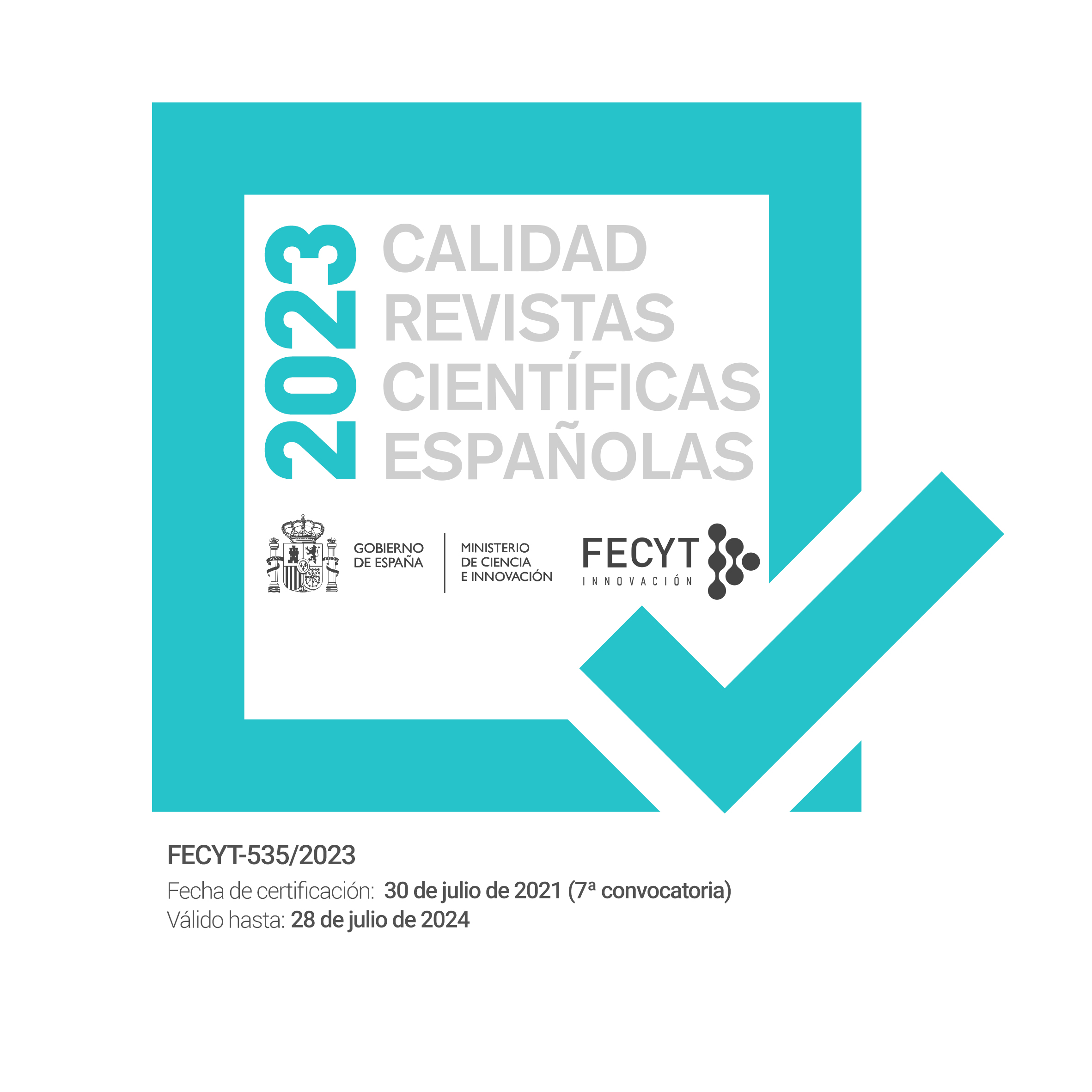Middle income countries? An alternative development taxonomy of Latin America and the Caribbean
DOI:
https://doi.org/10.26754/ojs_ried/ijds.45Keywords:
Latin America and the Caribbean, middle income countries, development classification, development clusters, official development assistance (ODA)Abstract
Although it is not asy to classify countries according to their levels of development –mainly because the concept of “human development” is complex and multidimensional –, the most widespread classification is just the simplest one, based on income per capita levels. According to this classification, most of the Latin America and the Caribbean (LAC) countries are located in the world middle-income strata. This paper proposes an alternative “development taxonomy” for LAC middle-income countries. Using a cluster analysis we identify and characterize three groups of countries in relation to 10 main “development gaps”: the most advanced countries (Mexico, Chile, Argentina, Venezuela, Uruguay and Brasil), the middle-development countries (Panama, Costa Rica, Colombia, Jamaica, Dominican Republic, Ecuador, Peru, Belize, El Salvador, Paraguay and Guyana) and those countries with the greatest development challenges (Guatemala, Bolivia, Honduras and Nicaragua).
CITE AS:
Tezanos-Vázquez, S., Quiñones-Montellano, A. (2012).
¿Países de renta media? Una taxonomía alternativa del desarrollo de América Latina y el Caribe. Iberoamerican Journal of Development Studies, 1 (2): 4-27
Downloads
References
ALONSO JA (dir.) (2007). Cooperación con países de renta media. Editorial Complutense, Madrid
BANCO MUNDIAL (2011). The World Development Report 2012: Gender Equality and Development. The World Bank Press, Washington, D. C.
BANCO MUNDIAL (2012a). How we classify countries: a short history. http://web.worldbank.org/WBSITE/EXTERNAL/DATASTATISTICS/0,,contentMDK:2 0487070~menuPK:64133156~pagePK:64133150~piPK:64133175~theSitePK:2394 19~isCURL:Y,00.html
BANCO MUNDIAL (2012b). World dataBank. http: http://data.worldbank.org
BECKER GS (1962). Investment in human capital: a theoretical analysis. The Journal of Political Economy 70(5):9-49
BECKER GS (2007). Health as human capital: synthesis and extensions. Oxford Economic Papers 59(3):379-410
BRENNEMAN A (2002). Infrastructure & Poverty Linkages: A Literature Review. Banco Mundial, Washington, D. C.
CAD (Comité de Ayuda al Desarrollo) (2011). DAC List of ODA Recipients. > http://www.oecd.org/dac/stats/daclist
CEPAL (Comisión Económica para América Latina y el Caribe) (2005). Objetivos de Desarrollo del Milenio. Una mirada desde América Latina y el Caribe. Publicaciones de las Naciones Unidas, Santiago de Chile
CEPAL (Comisión Económica para América Latina y el Caribe) (2010). La hora de la igualdad. Brechas por cerrar, caminos por abrir. Publicaciones de las Naciones Unidas, Santiago de Chile
CEPAL (Comisión Económica para América Latina y el Caribe) (2012). CEPALSTAT. http://www.eclac.cl/estadisticas/
CONSENSO DE COPENHAGUE PARA AMÉRICA LATINA Y EL CARIBE (2007). Consulta de San José. Copenhagen Consensus Centre y Banco Interamericano de Desarrollo (BID). http://www.copenhagenconsensus.com/Projects/CC%20Latin%20America.aspx
DOMAR ED (1946). Capital Expansion, Rate of Growth, and Employment. Econometrica 14(2):137-147
DOMÍNGUEZ R (2009). Desigualdad y bloqueo al desarrollo en América Latina. Principios, Estudios de Economía Política 13:5-32
EVERITT BS, LANDAU S, LEESE M, STAHL D (2011). Cluster analysis. John Wiley & Sons, Chichester
FAY M, MORRISON M (2007). Infraestructura en América Latina y el Caribe. Acontecimientos recientes y desafíos principales. Banco Mundial y Mayol Ediciones, Bogotá
FONDO MONETARIO INTERNACIONAL (FMI) (2011). World Economic Outlook Database. http://www.imf.org/external/pubs/ft/weo/2011/02/weodata/index.aspx
GIMÉNEZ G (2005). La dotación de capital humano de América Latina y el Caribe. Revista de la CEPAL 86:103-122
HARROD RF (1939). An Essay in Dynamic Theory. The Economic Journal, 49(193):14–33
HESTON A, SUMMERS R, ATEN B (2011). Penn World Table, Version 7.0. Center for International Comparisons of Production, Income and Prices, Universidad de Pennsylvania. http://pwt.econ.upenn.edu/php_site/pwt_index.php
LARRÚ JM (2010). State Weakness in the Mediterranean and Sub-Saharan African Countries.A Statistical Analysis. In: Larrú JM. Aid Effectiveness in the Mediterranean Countries: An Structural Analysis of ODA and state weakness in the Mediterranean countries. Lambert Academic Publishing, Saarbrücken, pp 78-114
MILANOVIC B, MUÑOZ DE BUSTILLO R (2008). La desigualdad de la distribución de la renta en América Latina: situación, evolución y factores explicativos. América Latina Hoy 48:15-42
MOOI E, SARSTEDT M (2011). A concise guide to market research. Capítulo 9: Cluster analysis. Springer-Verlag, Berlin
MURPHY KM, TOPEL RH (2006). The Value of Health and Longevity. Journal of Political Economy 114 (5):871-904
NEIRA I (2007). Capital humano y desarrollo económico mundial: modelos econométricos y perspectivas. Estudios Económicos de Desarrollo Internacional 7(2):53-80
NIELSEN L (2011). Classifications of Countries Based on Their Level of Development: How it is Done and How it Could be Done. IMF Working Paper, WP11/31. International Monetary Fund
OCAMPO JA (2004). La América Latina y la economía mundial en el largo siglo xx. El Trimestre Económico LXXI(284):725-786
OCDE (Organización para la Cooperación y el Desarrollo Económico) (2002). The Measurement of Scientific and Technological Activities. Frascati Manual 2002: Proposed Standard Practice for Surveys on Research and Experimental Development. OCDE, Paris
OCDE (Organización para la Cooperación y el Desarrollo Económico) y CEPAL (Comisión Económica para América Latina y el Caribe) (2011). Perspectivas Económicas de América Latina 2012: Transformación del Estado para el Desarrollo. OECD Publishing. http://dx.doi.org/10.1787/leo-2012-es
PEÑA D (2002). Análisis de datos multivariantes. McGraw-Hill, Madrid
PNUD (Programa de Naciones Unidas para el Desarrollo) (2011). Informe sobre Desarrollo Humano 2011. Sostenibilidad y equidad: Un mejor futuro para todos. Ediciones Mundi-Prensa, Madrid
PNUD (Programa de Naciones Unidas para el Desarrollo) (2012). Indicadores internacionales sobre desarrollo humano. http://hdr.undp.org/es/datos/explorador/
QUIÑONES A (2012). Innovación: ¿principal motor del crecimiento? Principios, Estudios de Economía Política 20:11-40
ROSTOW WW (1959). The stages of economic growth. The Economic History Review 12(1):1-16
SEERS D (1972). What are we trying to Measure? Journal of Development Studies 8(3): 21-36
SEN AK (2000). Desarrollo y libertad. Planeta, Barcelona
SNEATH PHA, SOKAL RR (1973). Numerical Taxonomy. W.H. Freeman, San Francisco
SUMNER A (2012). Where Do The World’s Poor Live? A New Update. IDS working paper, No 393, disponible en: http://www.ids.ac.uk/files/dmfile/Wp393.pdf
TEZANOS S (2011). Más allá de 2015: Objetivos de Desarrollo del Milenio y desafíos para la nueva agenda internacional de desarrollo. Sistema, Revista de Ciencias Sociales 220:33-58
TEZANOS S (dir.) (2010). América Latina y el Caribe. Mapa estratégico para la cooperación del siglo xxi. Civitas-Thomson Reuters, Madrid
WARD JH (1963). Hierarchical groupings to optimize an objective function. Journal of theAmerican Statistical Association 58:236–244
Downloads
Published
How to Cite
Issue
Section
License
Copyright (c) 2012 Sergio Tezanos-Vázquez, Ainoa Quiñones-Montellano

This work is licensed under a Creative Commons Attribution-NonCommercial-NoDerivatives 4.0 International License.








